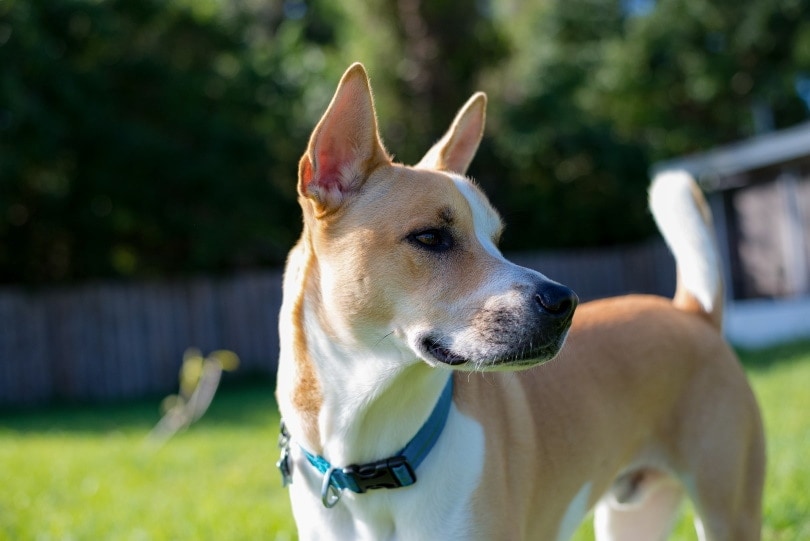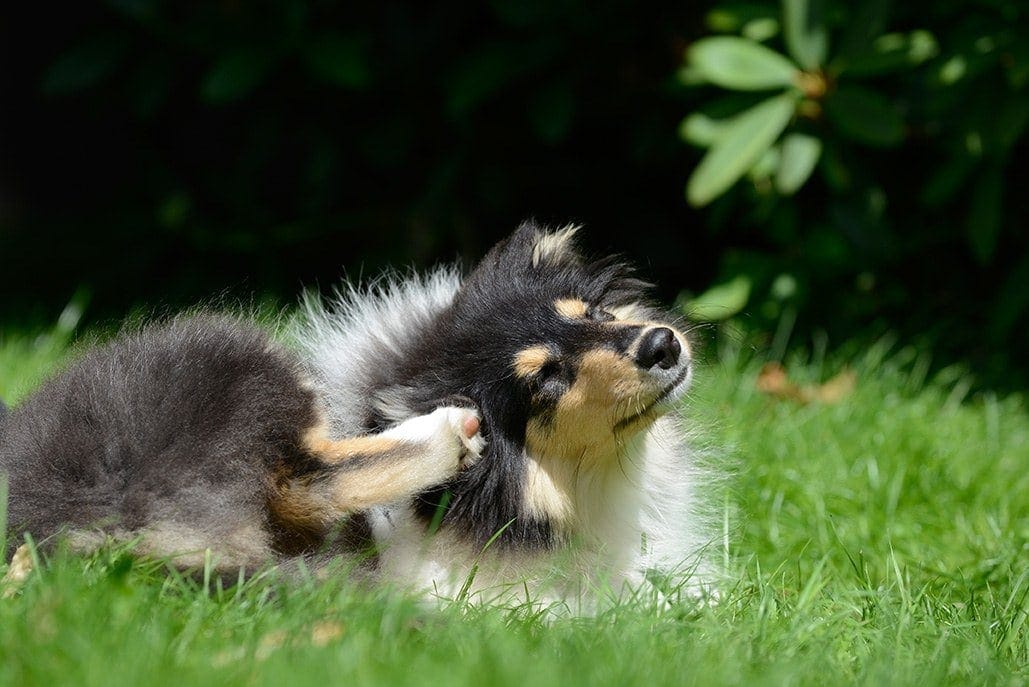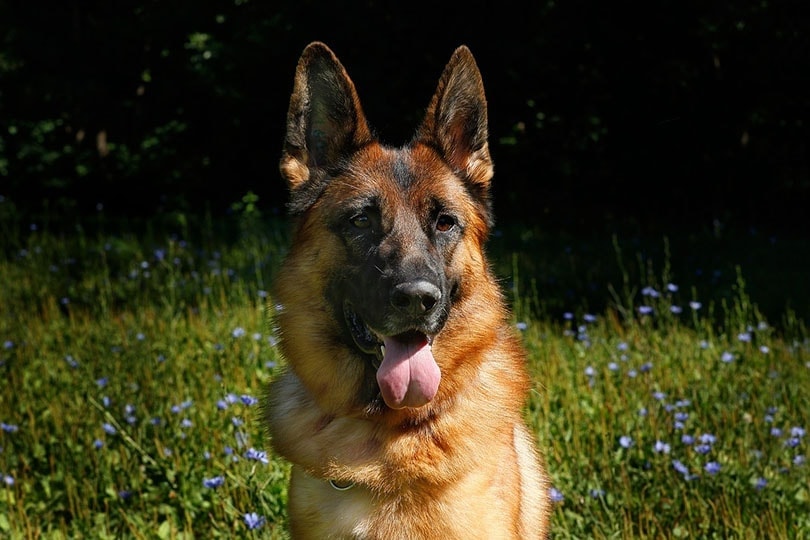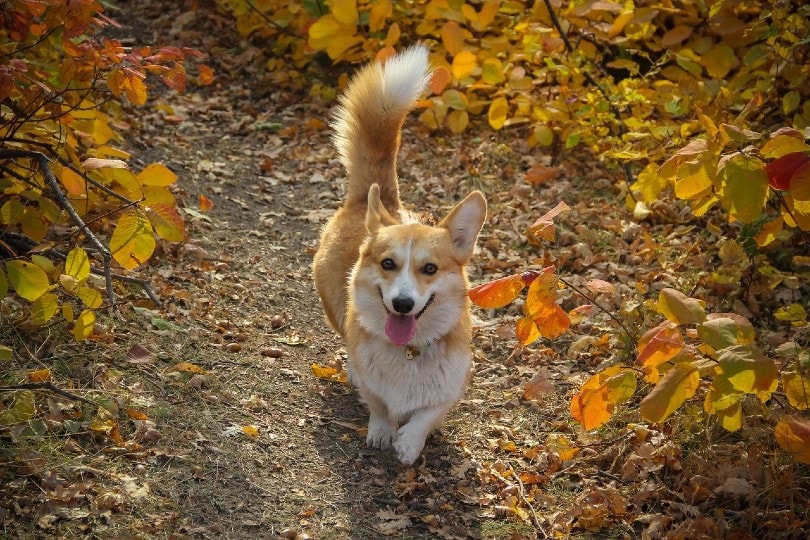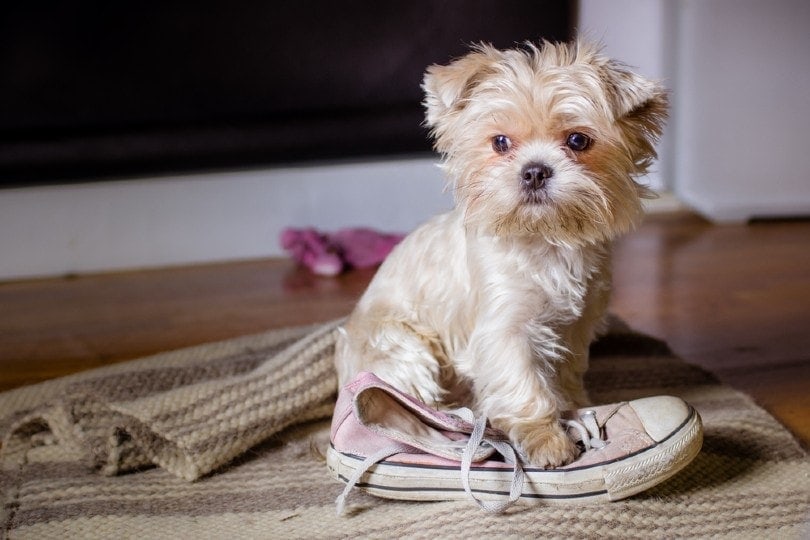Height:
19 – 24 inches
Weight:
30 – 70 pounds
Lifespan:
12 – 15 years
Colors:
Blue, brown, grey, white, red, black
Suitable for:
Families, energetic young people
Temperament:
Friendly but don’t like competition from other pets
The Pitsky is a medium dog breed that is created by breeding a Pitbull with a Siberian Husky. The appearance of the dogs can vary widely, in part because there is no breed standard for the Pitbull. Due to its violent past, it is not recognized by the American Kennel Club as a pure breed, and therefore no standard exists, which means the genetics and appearance of the Pitbull can vary greatly, which in turn affects the Pitsky.
A Pitsky can have long or short hair, they may or may not have the Husky’s blue eyes or the Pitbull smile, and their ears may stand erect or flop over. The Pitskys size can vary dramatically as well. They will also have an unpredictable personality that can be more like the Pitbull or husky, or a blend of both.
Pitsky Puppies – Before You Buy…
What is the Price of Pitsky Puppies?
There is a large price range for a Pitsky puppy. We’ve seen Pitsky’s advertised for as low a $150, or as much as $2500. Part of the price difference has to do with the Pitbull being a non-standardized breed. A higher-priced Pitsky will no doubt be from a reputable breeder that cares for the health of the dog as well as its value. These breeders are more likely to use animals with higher quality genetic makeup and produce a healthier dog.
Three Little-Known Facts About the Pitsky
- No one knows who invented the Pitsky, but they have been growing steadily in popularity for at least twenty years.
- The Siberian Husky is a medium-sized dog, and many don’t like the Husky part of the name because they say it’ misrepresentative of the smaller size of the animal.
- There are at least four breeds recognized by different kennel clubs as Pitbulls. These breeds include the Bull Terrier, the Miniature Bull Terrier, Staffordshire Bull Terrier, and the American Staffordshire Bull Terrier.
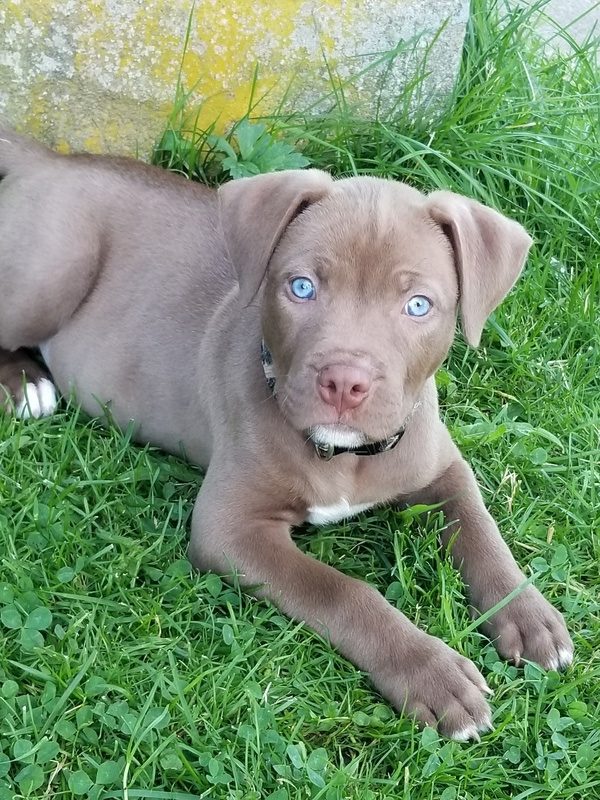
Temperament & Intelligence of the Pitsky
It’s hard to determine what the temperament of your Pitsky puppy will be because of the unpredictable nature of mixing these two breeds. Your pet’s temperament can be more like a Husky, more like a Pitbull, or some combination of both.
- If it’s more like a Husky, it will be playful and have a lot of energy of running and jumping around. It will tend to get bored easily and chew things when it does. They are also very vocal and like to howl. A Husky also tends to chase small animals like rabbits and squirrels.
- If it’s more like a Pitbull, it will be very friendly and like to cuddle. Pitbulls are protective of their owner, and they generally don’t like other dogs. Pitbulls also have a lot of energy but often prefer wrestling or tugging games to running and jumping.
Are These Dogs Good for Families?
The Pitsky makes a great family pet if you don’t have any other dogs. They are friendly, intelligent, and playful. A Pitsky likes to get all of the attention, and they have a natural predisposition towards arguing with other dogs unless you get them started socializing early in life. They need plenty of exercise and attention, of which children are great providers. Still, Pitskys will require at least one family member dedicated to taking them for long walks and supplying them with prolonged exercise.
Does This Breed Get Along with Other Pets?
If you begin socializing your Pitsky with other pets at a very young age, they will usually get along with other dogs in your household just fine. However, the Pitbull in them causes them to tend not to like other dogs, and can they can become aggressive in some instances. The Husky in them may have your dog chasing rabbits and squirrels around the yard as well.
Socializing is the key, and the animals they get used to as a baby are the ones it will allow in its life as an adult.
Things to Know When Owning a Pitsky:
Food & Diet Requirements
Most experts recommend between 2.5 and 3 cups of food per day for a dog this size. PetMD has an advanced formula for determining the precise amount of food you should feed based on several factors, including weight, age, activity level, and environment.
It’s important to get the highest quality food that you can afford to give your Pitsky a balance of essential vitamins and minerals. Your dog food should contain a lot of high-quality meats and no by-products or harmful preservatives like BHA. Watch out for foods that have a lot of mysterious ingredients, and it’s usually better to avoid specialty foods like “grain-free” or “weight-gaining” unless directed to use them by a veterinarian.
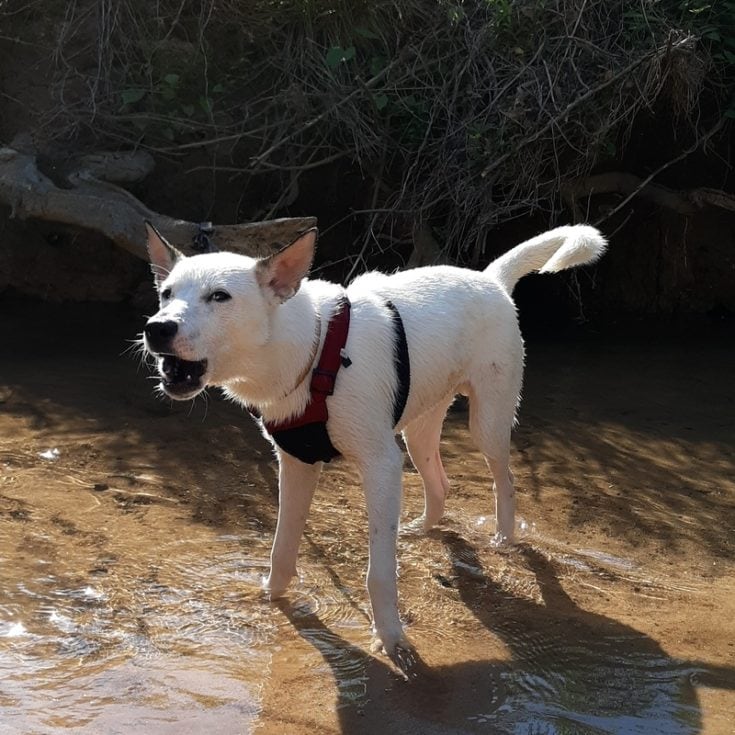
Exercise
A Siberian Husky can travel hundreds of miles in a few days, and a pit bull has a history of wrestling bulls as well as bears for sport, so it makes sense that your Pitsky is going to need a lot of intense exercises to stay happy and healthy. Some experts claim an excess of 90 minutes of exercise a day is required to prevent your Pitsky from putting on weight.
Because of the high degree of exercise required, this breed is best suited to families where at least one member is athletic or spends a lot of time outdoors where they can provide space and motivation to complete the exercise.
Training
Both parents of the Pitsky are intelligent breeds that do well with proper training and can perform a multitude of tricks. In many cases, trained dogs will obey a command the first and can complete a variety of objectives.
Training your Pitsky is not hard and only requires rewarding good behavior with a treat. Treating a puppy that follows a command is a fast way to unlock the power of an obedient pet.
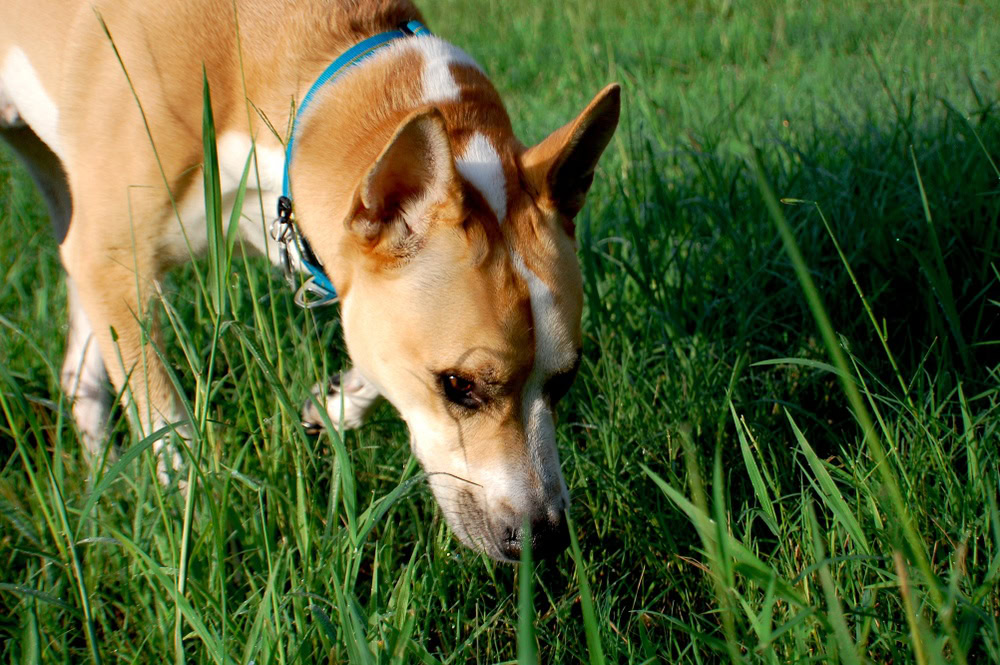
Grooming ✂️
If your Pitsky has a Pitbull coat, the hair will be short and straight, requiring only occasional brushing.
If your Pitsky has the Siberian Husky coat, it requires a substantial amount of maintenance. The coat of a Siberian husky has two layers, and each will need special care to keep from matting and tangling. This type of coat will require frequent brushing and trimming. You will also likely require detangling and de-matting products as well as occasional trips to the professional groomer.
Health and Conditions
Pitsky puppies come from strong stock, and most have few health problems and require vet visitations only rarely, but there are a few things that they are prone to that we would like to go over with you. We’ve divided the health conditions into serious and minor, but all problems need immediate attention.
- Knee Complications
- Follicular Dysplasia
- Hip Dysplasia
- Hypothyroidism
- Obesity
These are the more concerning problems your Pitsky can face.
Hip Dysplasia
Hip dysplasia is common in the Husky breed, large dogs, and extremely active dogs. Hip dysplasia is a painful joint condition that can reduce your pet’s mobility and diminish the quality of life. Improper weight, poor nutrition, and lack of exercise make the problem worse.
Hypothyroidism
Hypothyroidism is a disease common to the Siberian Husky as well as the Pitbull, meaning it’s something that will keep you on constant lookout. Hyperthyroidism is a serious issue that affects many dog breeds and can lead to hair falling out, as well as weight gain and cold intolerance. Hyperthyroidism is also one of the most misdiagnosed illnesses because many other health problems produce the same symptoms.
Once diagnosed, you can treat hypothyroidism by taking a hormone supplement.
Obesity
Obesity is a severe problem to the Pitsky, and it’s through no fault of their own. Obesity is the result of a lack of exercise and overeating. It’s prevalent in dogs like the Pitsky, Pitbull, and Siberian Husky because their owners don’t have the huge chunks of time required to provide enough exercise to maintain a healthy weight. Obesity is one of the reasons we stress how much exercise this breed requires because there are plenty of breeds available for every lifestyle and activity level. If you live alone in a small apartment and spend most of your day at work, a Pitsky is not the best choice.
Here are a few less common or minor problems common to the Pitsky.
Knee Complications
Pitskys are active animals that like to jump and wrestle. This activity puts a lot of strain on the canine cruciate ligament, which is similar to the ACL in people. Over time, this ligament can wear out and cause your pet pain and swelling in the knee area. This problem is often seen in their Pitbull parent and is usually brought on by old age. If your pet is experiencing symptoms of knee pain early in life, it’s best to take them to the vet immediately.
Follicular Dysplasia
If your Pitsky takes after the Siberian Husky and has the thick coat of fur, it could be at risk for follicular dysplasia. Follicular dysplasia is a disorder that can cause hair loss and patchy skin, and there is no treatment though shampoos and topical creams can help.
Male vs Female
Female Pitskys tent to be a little shorter and lighter than their male counterparts, which makes them a little less susceptible to injuries caused by activity and reduces the chances of knee complications and hip dysplasia. The females will still be at risk from the many dangers associated with the reproductive system and childbirth, however.
Summary:
A Pitsky is an excellent pet if you have a lot of time to devote to playing with it, or you have a lot of family members that can help. They are very friendly and get along well with small children. They are a little hostile toward other dogs if you don’t socialize them early and often, and they will chase rabbits and squirrels, but they stay by your side and follow all of your commands with a minimum amount of training.
We hope you have enjoyed our in-depth look at this unique cross between the Siberian Husky and the Pitbull. If you have found it useful, please share this guide to the Pitsky on Facebook and Twitter.
Featured Image Credit: AllisonJ7, Shutterstock

